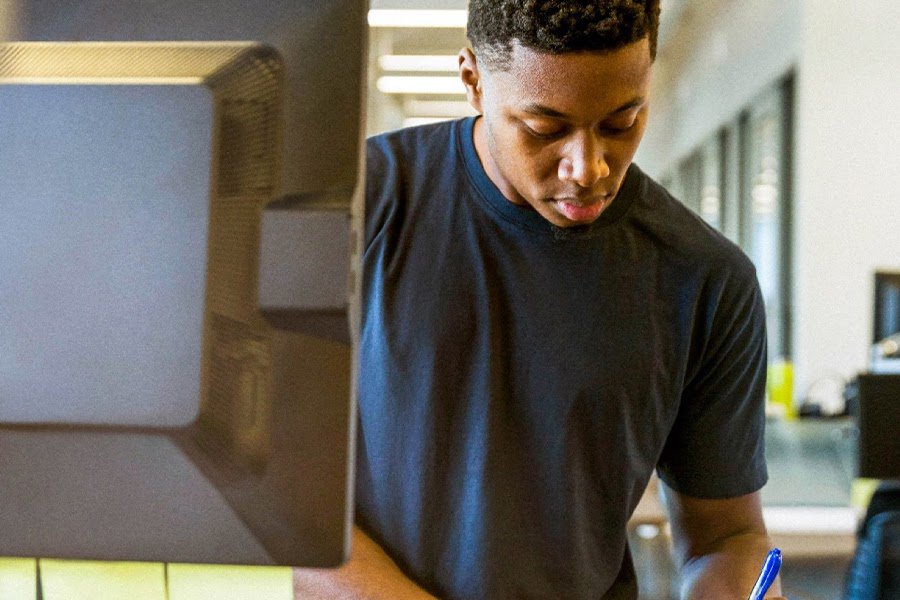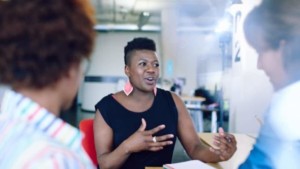How Two Teachers are Championing Representation in the Classroom

By: John Broadway
Representation is a bigger conversation than ever, and educators want to know how they can create more inclusive and representative environments, starting in their own classrooms. How can teachers take action to make sure their students feel seen and represented?
Over the last year, this was one of the questions we explored through a Roadtrip Nation storytelling project following seven teachers adapting to remote teaching, sharing what’s on their minds as they map their future in education, and talking to veteran educators about what’s kept them in the classroom.
Representation was a major theme, and two of the featured educators, Vera Ahiyya and Lynette Stant, shared their own experiences to provide valuable insight that other educators can learn from.
Building a reading list that reflects your students
Stories that children hear in the classroom help shape their ideas of who they are and what they can do. For Brooklyn-based kindergarten teacher Vera Ahiyya, this knowledge drove her to ensure that students could see themselves in her classroom.
Vera runs The Tutu Teacher blog, where she curates and shares culturally diverse reading lists for educators and parents. Her experience as a student inspired her to start the reading list, as she imagined how impactful these stories would have been for her as a young child.
“Once books featuring kids of color and different religions became available, that’s when I was like, oh my gosh, imagine if I was 5 in a classroom, and a teacher — specifically a Black teacher — pulled out a book and the girl had my hair or my same skin color,” she says. “That would have been hugely impactful in the way that I saw what was available for me.”
“When [students’] only assurance for who they are is what’s around them, and never in conversations, and never in classrooms or on TV, they only think that’s what they can do.”
Paying more attention to representation to your classroom materials can have far-reaching impacts, raising students’ own expectations for themselves and supporting their social-emotional learning by helping them develop cultural competency through understanding other perspectives, building empathy, and appreciating others’ strengths.
But those impacts stretch beyond the students’ experiences, to yours as an educator. Including more representative narratives in the classroom also helps teachers reflect on how their own identities impact their attitudes and teaching practices.
For Vera, bringing more narratives to the center is also about respect. She’s intentional about using representations to uplift students and provide them the attention they deserve. “Every child in my classroom is deserving of love and respect, and they deserve to be seen and heard and understood. To not be inclusive to that child, or that child’s family or identity, is doing a disservice to them, and it’s disrespectful.”
Educators are uniquely positioned to make sure their students can see and feel that respect for their experiences, and this sentiment is embodied in the experience that Arizona’s 2020 Teacher of the Year, Lynette Stant, shared with us.
Student-level impacts of cultural representation
Lynette Stant is a third-grade teacher in the Salt River Pima-Maricopa Indian Community and a member of the Navajo Nation. Her role in building relationships and providing representation for students grounds her, serving as the foundation of her work.
“When I come to those points of ‘I’m done [with teaching],’ I always take myself back to my foundation,” she says. “Why did I go into this? And for me, it’s about relationships — building them with kids and families. As brown women, our brown children need that. They need those connections. They need people from their community telling them, ‘If you work hard, this is what you can do.’”
Being awarded Arizona’s 2020 Teacher of the Year underscored the importance of representing her community. “This is what the ancestors pray for,” her mother told her when she heard the news.
“I couldn’t understand what [my mother] meant until the next day when we had a big celebration at the school for me. And just like a movie, the crowd parted, and down the middle is this little girl running as fast as she could to me and she jumps in front of me and exclaims, ‘You’re just like me! You’re Navajo like me!’”
While this interaction may seem small, there’s no telling how impactful it was for that student. In other scenarios, research has shown the power of representation for students’ educational outcomes. A 2018 study from Johns Hopkins University found that Black students who had one Black teacher by third grade were 13 percent more likely to enroll in college — and that percentage jumped to 32 percent for Black students who had two Black teachers during K-3.
This finding builds on a 2017 study that found that the probability of a low-income Black student dropping out of high school was reduced by 29 percent if that student had one Black teacher in grades 3-5.
So representation in the classroom matters, not only because we want all students to be able to feel belonging in their classrooms, but because it can materially impact a student’s self-image, dreams, and educational outcomes. Educators must understand the impact and role that representation plays for students so that they can be advocates for more representation in their classrooms, whether that’s through the classroom materials they choose, or their own experiences. And with that understanding must come action as well.
Here are some steps educators can take to create a more representative classroom environment :
- Use books and stories featuring diverse characters: Some great places to start are these recommendations from the American Library Association (ALA), books by theme from the National Education Association (NEA), these curated book lists from Scholastic, or to get updates about Vera’s recommendations, follow her on Instagram @thetututeacher and @diversereads.
- Highlight a diverse range of historical figures: PBS LearningMedia covers a wide range of historical topics with a focus on representation; explore learning resources for students based on “A People’s History of the United States”; dive into Learning for Justice, a project by the Southern Poverty Law Center, highlights social justice themes while supporting social-emotional learning; and Vera highlights children’s books about leaders of color on her blog.
- Acknowledge the diversity of cultures, identities, religions, and more that exists within your classroom: This article provides a wealth of resources for teachers who want to create a more inclusive and representative space.
- Engage in discussions with students about diversity, inclusion, and representation: Here are some ideas to start from EdChange.
These are just the first steps that any educator can take, and they’re also just the beginning of creating an environment in your classroom that enriches your teaching and discussions, and empowers students to truly explore all that they can do and be.
For more, see:
John Broadway is a writer and filmmaker who traveled the country in Roadtrip Nation’s green RV talking to students about how to find their paths in life.
Stay in-the-know with innovations in learning by signing up for the weekly Smart Update.





0 Comments
Leave a Comment
Your email address will not be published. All fields are required.